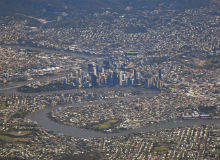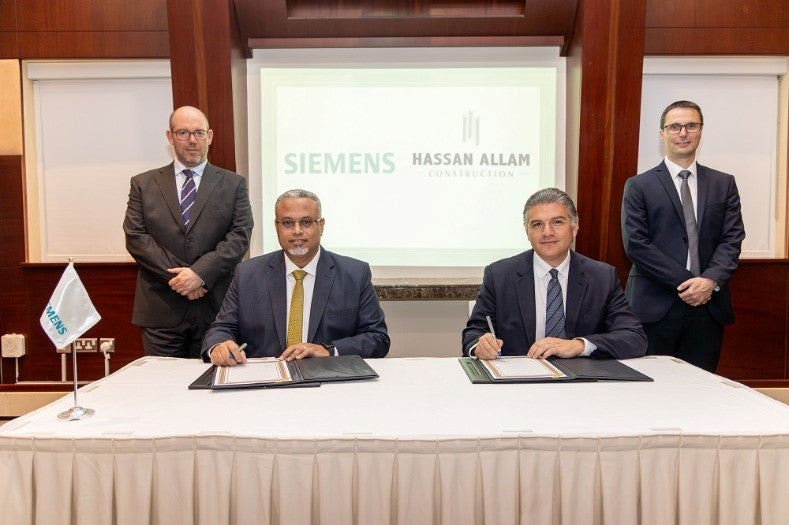

In 2010, the head of government in the state of Queensland, Australia, released a concept to build a $7bn Cross River Rail (CRR) twin-tunnel. Premier Anna Bligh saw it as a way to solve South East Queensland’s, and specifically Brisbane’s, growing rail congestion problem.
Fast forward two years and Campbell Newman, Bligh’s successor, had scrapped the idea in favour of a single tunnel that included buses and trains (BaT) underground. History repeated itself in March last year when yet another head of government, Annastacia Palaszczuk, ditched BaT and set about fashioning a new route.
Palaszczuk’s deputy, Jackie Trad, summed up the situation in April: “We know that there has been a level of frustration in relation to this project,” she said. “We know that there has been chopping and changing. It seems like every time a government is elected there's a different view.”
Palaszczuk and Trad have now come up with a new alignment, released to the public in April, which more closely follows that of the 2010 original. A 10.2km link will run from Dutton Park to Bowen Hills, while 5.9km of tunnel will be constructed under the Brisbane River and Brisbane Central Business District (CBD), connecting to northern and southern rail networks. At the time of writing, a business case was expected to be handed to the Queensland Government in June.
See Also:
Announcing the route, which could take five years to build from the start of construction, Trad labelled it a “once-in-a-generation opportunity to reshape Brisbane through this major city-making initiative”. She also committed to creating a delivery authority to help push the project through.
How well do you really know your competitors?
Access the most comprehensive Company Profiles on the market, powered by GlobalData. Save hours of research. Gain competitive edge.

Thank you!
Your download email will arrive shortly
Not ready to buy yet? Download a free sample
We are confident about the unique quality of our Company Profiles. However, we want you to make the most beneficial decision for your business, so we offer a free sample that you can download by submitting the below form
By GlobalDataRising demand: the necessity of Cross River Rail
This desire to break through the logjam comes down to a consensus that Brisbane needs a new transport link to meet rising passenger demand and population growth.
The Cross River Rail project estimates that there could be up to 1.2 million public transport trips into the Brisbane metropolitan region every day by the 2030s. Population in the region is expected to hit 4.9 million by 2036, with 80% of workers using public transport in the morning peak hours.
A report in April by the Brisbane Times newspaper found that some trains were already regularly carrying more than their designed limit, although the situation is not as severe as in Melbourne or Sydney, or further afield on some European and Asian metros.
Infrastructure Australia, an organisation that advises the national government, has also included CRR in a list of 93 projects it believes are necessary to cope with congestion.
Gavin Seipelt from Rail Back on Track – a campaign group that promotes rail travel in Australia – believes the ‘headline’ reason is the ever-increasing strain being placed on the Merivale Bridge, the only inner-city rail crossing in Brisbane, which was built in 1978. It is predicted that CRR could also shave up to 15 minutes off trips to the CBD from southern suburbs.
“As passenger numbers grow, the bridge is reaching capacity,” he says. “The southern suburbs in particular are seeing a lot of residential growth, and many people enjoy living by ocean on the Gold Coast and commuting to Brisbane.”
In short, he continues, it's a “must do” for the future of the rail network in South East Queensland. “If it doesn't get done, then as a region we'd be giving up on rail being a major part of our transport future.
“We’d even argue that our competitiveness with other Australian and Asia-Pacific cities is suffering because of the stalling on this project.”
Financing Australia’s CRR project
But will this latest proposal be the one that finally gets CRR off the ground and out of the boardroom? Well, the answer hinges on the motivation of government and politicians.
“Various governments in Australia have given urban rail a bit of lip service, and Queensland was no different in that respect,” explains Seipelt. “The project perhaps hasn't received the attention it deserved.
“It’s a mixture of different governments arguing over funding, and changes of government leading to design changes of questionable motivation,” he adds.
Funding, as with any major infrastructure project, is a hotly debated topic. Many people agree that CRR is needed, but how do you pay for the estimated $5.2bn cost?
In April, Trad told how it would need investment from all corners, saying: “Projects of this size and significance can't happen without every jurisdiction making a contribution – state, federal, local governments, as well as the private sector.”
Queensland Treasurer Curtis Pitt reinforced this point in June, saying the state government “will not do [it] on its own and cannot do on its own”, adding: “We know that this is a large project, one that will attract a range of interest from a range of people.”
There have also been stories that the Korea Development Bank could play a part, following the signing of an infrastructure memorandum of understanding between the bank and Queensland earlier this year.
Queensland Government has since announced its state budget, which allocates $50m as a “down payment” for CRR to help with planning and environmental approvals. Of course that barely scratches the surface, and Trad and Seipelt agree that “innovative funding models” will have to be considered; they have both highlighted London’s Crossrail as one such example.
Crossrail has used several sources of funding, but Trad has highlighted ‘value capture’ where she says areas around the project “pay a contribution because they value-uplift in terms of their properties and businesses”.
Seipelt is similarly impressed: “I think the funding model used for Crossrail was a bit of a breakthrough and could definitely be applied in Brisbane. I think levying businesses that stand to benefit from it makes sense because these benefits are strongly localised.”
Public appetite: will it ever be built?
It’s also important, however, to consider the benefits to local communities businesses. As stated, CRR could reduce travel time and at the very least make journeys that little bit easier, although Seipelt admits there is some resistance.
“It’s a strange one,” he muses. “I'd say most people in South East Queensland understand the need for the project, particularly regular rail users.” On the other hand, he adds that “there are many people in the outer suburbs wanting rail lines built to their areas and more frequent trains, and rightfully so”.
Some of the dislike for these mega projects comes down to a failure to appreciate the impact they can have, according to Seipelt. “Some people have a first impression that the project is just a subway for inner city dwellers and do not understand the wider role it will play in actually giving them what they are after in the long-term.”
Despite this being the third incarnation of CRR, as a whole the plan is still very much in its infancy, hence much of the language of ‘long-term’ and ‘opportunity’. Hand on heart, does Seipelt think it will ever be built?
“I think it will be, yes, but it just hasn't been as timely or progressed as efficiently as [it could have been],” he says.
“Sydney and Melbourne have bitten the bullet and gotten their major inner city rail projects underway now because the level of public support for better rail reached fever pitch and governments had to take that seriously. That will happen in Brisbane, too.”







